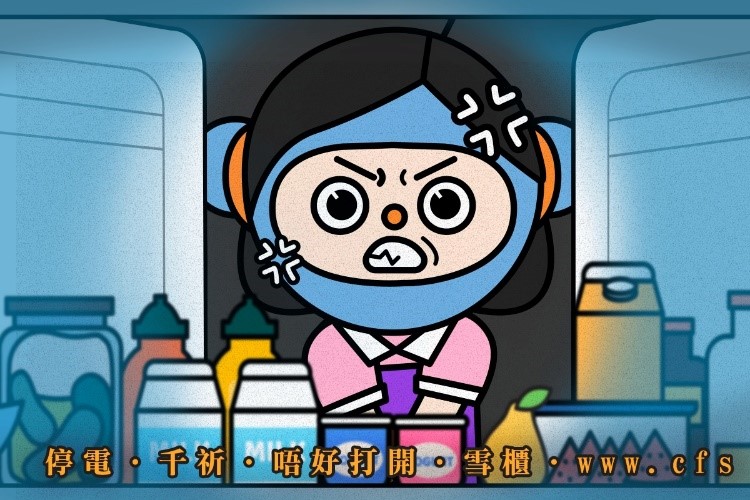
Feature Article
Shellfish Poisoning
The Centre for Food Safety (CFS) received in April 2023 a referral from the Centre for Health Protection of a suspected case of diarrhoetic shellfish poisoning in which the affected persons developed diarrhoea, nausea, vomiting and abdominal pain within an hour after consuming venus clams at a restaurant. This article gives a brief introduction on shellfish poisoning.
What is Shellfish Poisoning?
Shellfish poisoning is caused by shellfish toxins produced by certain species of algae. When shellfish eat toxin-producing algae, the toxins can accumulate in their tissue. Consumption of shellfish containing shellfish toxins by humans can cause a variety of gastrointestinal and neurological illnesses, known as shellfish poisoning. Examples of shellfish that have been involved in shellfish poisoning include mussels, clams, oysters, scallops and geoducks.
Numerous shellfish toxins have been discovered around the world; they could cause different types of shellfish poisoning. Five major types of shellfish poisoning are discussed below:
(i) Paralytic shellfish poisoning (PSP) --- caused by paralytic shellfish toxins (PSTs), which are a group of water-soluble alkaloid neurotoxins, including saxitoxins (STXs).
(ii) Diarrhoetic shellfish poisoning (DSP) --- caused by diarrhoetic shellfish toxins (DSTs), which are a group of lipid-soluble polyether toxins, including okadaic acid (OA).
(iii) Neurotoxic shellfish poisoning (NSP) --- caused by neurotoxic shellfish toxins (NSTs), which are a group of lipid-soluble polyether toxins, including brevetoxins (BTXs).
(iv) Amnesic shellfish poisoning (ASP) --- caused by amnesic shellfish toxins (ASTs), including the water-soluble amino acid domoic acid (DA).
(v) Azaspiracid shellfish poisoning (AZP) --- caused by azaspiracid shellfish toxins (AZTs), including the lipid-soluble toxin azaspiracid (AZA).
Characteristics of Shellfish Toxins
Different groups of shellfish toxins display multifarious chemical structures, which can be broadly classified into amino acids (DA), alkaloids (STXs) and polyketides (OA, BTXs and AZA).
The reasons why some algae produce shellfish toxins remain unknown. These toxins are secondary metabolites with no explicit function for the algae. They are probably used by the algae to compete for space, defence against predators or prevent the overgrowth of other organisms.
In general, shellfish toxins are heat stable, odourless, tasteless and not destroyed by cooking, freezing or other food preparation procedures. It is hard to distinguish between toxic and non-toxic shellfish visually.
Bioaccumulation of Shellfish Toxins in Bivalve Molluscs
Algae are part of the natural diet of bivalve molluscs. After shellfish has ingested shellfish toxin-producing algae, shellfish toxins will accumulate and concentrate in their internal organs, such as hepatopancreas of bivalves (Figure 1). Generally speaking, the adductor muscle contains only a low level of shellfish toxins.
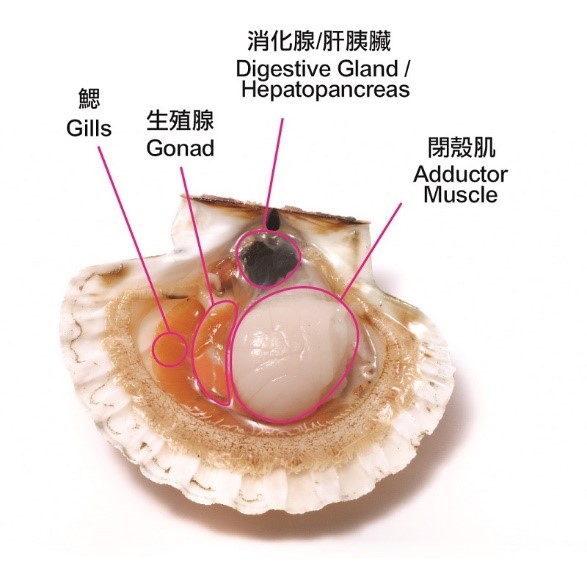
Figure 1: Internal parts of a scallop
Symptoms of Shellfish Poisoning
Shellfish toxins can cause a wide variety of symptoms in humans, depending on the type and amount of toxins ingested. Symptoms of different types of shellfish poisoning are summarised below:
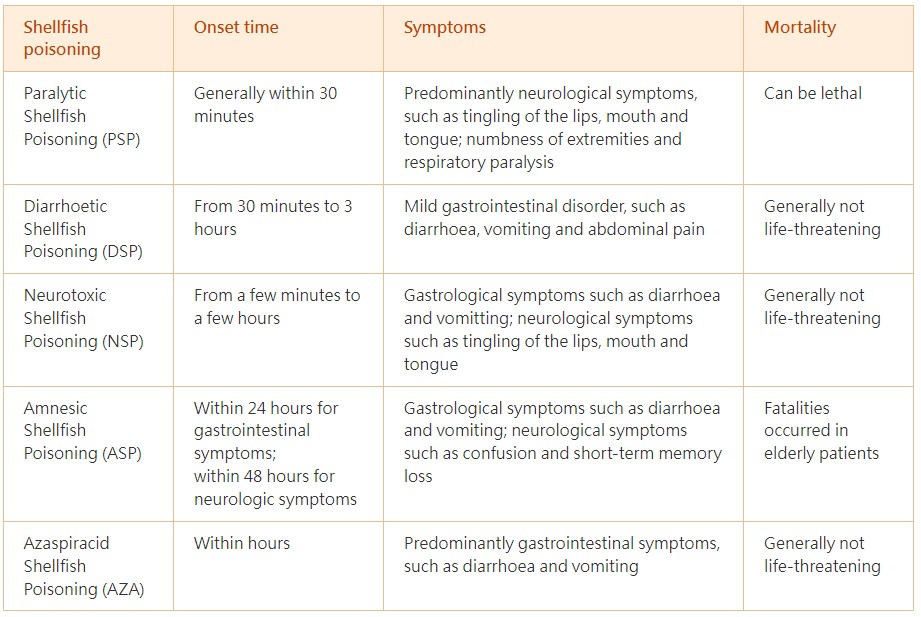
Safety Levels of Shellfish Toxins
The toxicity of various shellfish toxins was evaluated by a joint expert working group of the Food and Agriculture Organization of the United Nations (FAO), the World Health Organization (WHO) and the Intergovernmental Oceanographic Commission of UNESCO in 2004. Acute reference doses (ARfDs) (i.e. the amount of toxins that can be ingested in a period of 24 hours or less without appreciable health risk) have been established for these shellfish toxins. In addition, the Codex Alimentarius Commission (Codex) has established the maximum levels (MLs) for shellfish toxins in edible parts (the whole or any part intended to be eaten separately) of live bivalve molluscs. While the ARfDs are critical in assessing the safety of food in terms of the level of shellfish toxins contained, Codex MLs are the levels recommended by Codex to be permitted in shellfish.
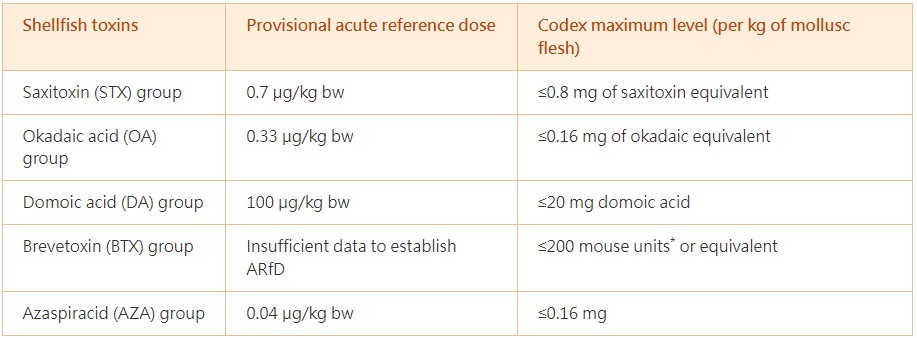
*An estimate of toxicity of the toxin made by mouse bioassay.
Key Points to Note
- Shellfish toxins are heat stable, odourless, tasteless and not destroyed by cooking, freezing or other food preparation procedures.
- It is hard to distinguish between toxic and non-toxic shellfish visually.
- In general, shellfish toxins accumulate and concentrate in the internal organs of bivalves.
Advice to Consumers
- Purchase shellfish from reliable sources.
- To reduce the health risk of shellfish poisoning, remove and discard all internal organs of shellfish where possible before consumption.
- Seek medical attention immediately if you feel ill after eating shellfish.
Mascot ON in Lesson
Food Safety Concern over Radioactive Contamination
Recently, the media has been voicing concerns over the discharge of treated nuclear-contaminated water from the Fukushima nuclear power station (FNPS) and its possible contamination of the marine environment and seafood. It is the Hong Kong SAR Government's prime consideration to ensure food safety. In response to the FNPS incident in 2011, the Administration has imposed import control measures on Japanese food and has been reviewing these measures on food products imported from Japan in light of the latest test results and developments.
Japan's Discharge Plan
The Government of Japan discharged into the ocean the nuclear-contaminated water generated in the process of cooling the nuclear reactors at the FNPS after treatment in the summer of 2023. The nuclear-contaminated water had direct contact with the active raw materials of the nuclear reactors and thus contained a high concentration of radioactive substances. The discharge plan will last for 30 years. During this long period of time, if the purification system fails to operate effectively, it may pose significant risks to food safety and marine ecology. The plan has aroused concern from the international community and the public.
International Atomic Energy Agency’s Review
The International Atomic Energy Agency (IAEA) has set up a Task Force to review Japan's discharge plan. The Task Force has conducted visits to Japan and published review reports to make suggestions on some technical and regulatory aspects of the discharge plan to the Japanese authorities. In July 2023, the IAEA released a report on its review work conducted prior to the discharge and indicated that its review work would continue during the discharge phase.
Enhanced Testing on Imported Japanese Aquatic Products
According to a report issued by Tokyo Electric Power Company Holdings (TEPCO) earlier, a fish sampled from the port area of the FNPS was found to contain 18 times the guideline level of the radioactive substance Caesium adopted by Codex (Codex guideline level). Caesium can be taken into the body by eating food or drinking water. After ingestion, it is absorbed into the bloodstream and distributed throughout the body. It tends to concentrate in muscles. The consumption of the fish in question may pose a risk to health and increase the likelihood of inducing cancer.
In view of the report concerning the fish sampled in Fukushima containing Caesium exceeding the Codex guideline level, the CFS has adjusted its corresponding monitoring work and enhanced its testing on imported Japanese aquatic products. The fish in question was caught in May 2023, and the laboratory report was uploaded onto TEPCO's website on 5 June 2023. In fact, the CFS has since mid-June expanded the scope of testing to cover all Japanese aquatic products.
Myth 1: Consumption of iodine-rich foods, such as iodised salt, as a prophylactic measure
In previous nuclear emergencies where radioactive iodine might have been involved, iodide tablets would be distributed by health authorities as protection against radiation by preventing the uptake of radioactive iodine by the thyroid gland.
However, there is no scientific evidence to suggest that iodine-rich foods and iodised salt have a similar radiation protective effect to iodide tablets. For iodised salt, its iodine content is relatively low. One has to take about 2.5 to 5 kg of iodised salt a day in order to absorb the equivalent dose of iodine contained in an iodide tablet. Excessive consumption of salt is harmful to health, especially for those with high blood pressure, heart disease or kidney disease.
Myth 2: Measurement of radiation with self-purchased portable radiation detectors
Ionising radiation detectors (commonly known as nuclear radiation detectors) for professional uses have to comply with the requirements on accuracy and sensitivity and need to be calibrated regularly by professional bodies to make sure that they give accurate and reliable results. Self-purchased portable radiation detectors may not have the required measurement capability nor relevant professional certification and calibration, and thus cannot replace radiation monitoring and assessment by professional equipment and personnel. Therefore, self-purchased nuclear radiation detectors may not have the capability to determine the radiation levels in food.
Advice to the Public
- With effective food control measures in place, foods available on the market are not likely to be contaminated with a high level of radioactivity.
- The CFS will further enhance the dissemination of testing results as well as information on the safety of Japanese food (including the radiological testing results of food products from Japan) to members of the public to dispel public concerns.
- Members of the public should not purchase nuclear radiation detectors to measure radiation levels in food, for they may not have the required measurement capability.
Dining Out
Glutamates in Your Kitchens
In 1908, Kikunae Ikeda, a Japanese professor, extracted glutamates from a seaweed broth and concluded that glutamates provided a savoury taste to the broth. He also noticed that the taste of the broth was distinct from sweet, sour, bitter and salty, and named it umami, the fifth taste. Glutamate has since been commercially produced, generally in the form of monosodium glutamate (MSG), and used by chefs and home cooks frequently to enhance the flavour of their dishes.
What are MSG and Glutamates?
MSG is a white crystallised, odourless sodium salt of glutamic acid, one of the most abundant amino acids found in nature and produced by living organisms including humans. At present, various salts (e.g. potassium, calcium, magnesium and sodium) of glutamic acid (collectively known as “glutamates”) are added to food as flavour enhancers. Various foods, such as seasonings and condiments, may also contain natural or artificial glutamates. In the commercial production process of MSG, fermentation technology is used to convert sugars from different sources into glutamates (Figure 2).
Given that glutamates are ubiquitous in foods, the dietary exposure to glutamates in adults through natural or man-made sources is extensive:
(1) Natural sources: (i) “bound” glutamates that occur as proteins in almost all food (for example milk, meat, poultry, fish, vegetables and mushrooms); and (ii) “free” glutamates (i.e. not bound to proteins) present in tomatoes, mushrooms, yeast extracts, fermented fish sauce and fermented/hydrolysed protein products (for example soy sauce), which account for the savoury flavour of these foods; and
(2) Man-made sources: “free” glutamates added to food as salts of glutamic acid (for example MSG).
Free glutamates can attach to specific receptors on the tongue and induce the umami flavour, while bound glutamates cannot. Natural glutamates and those artificially produced are chemically indistinguishable. Both sources of glutamates are metabolised in the same way in our bodies.
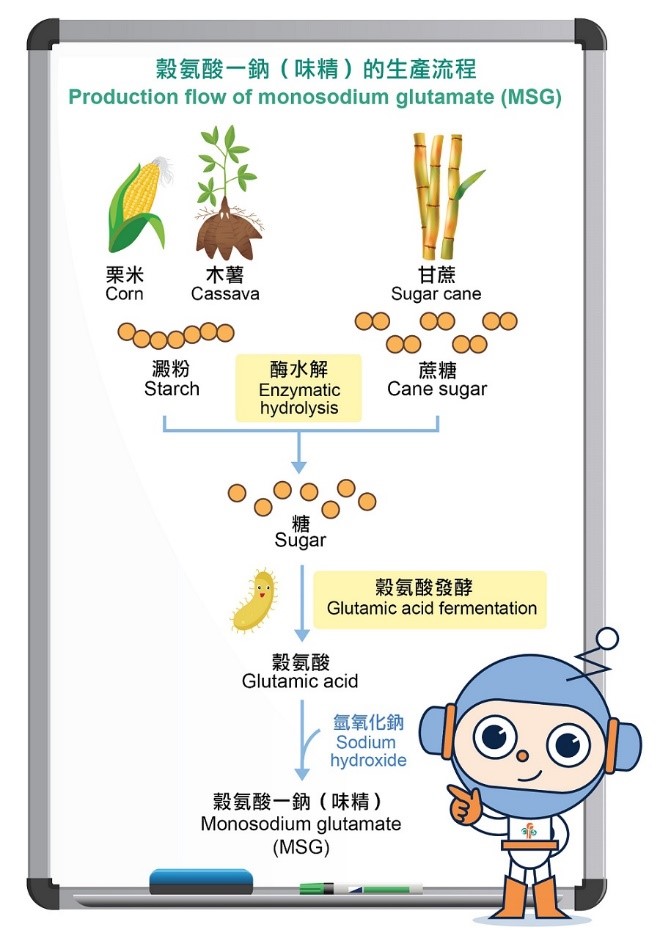
Figure 2. MSG is produced by fermentation of sugars from different sources
According to the U.S. Food and Drug Administration (USFDA), an average adult in the U.S. consumes approximately 13 grams of glutamates each day from the protein in food, while the daily intake of added MSG is estimated at around 0.55 gram. Other studies show that among the European population, average MSG consumption represents between 6% and 12% of total glutamate intake. In summary, the intake of free glutamate from food additives only constitutes a small proportion of our total intake of glutamates from different sources.
Safety of MSG
The Joint FAO/WHO Expert Committee on Food Additives (JECFA) has allocated an acceptable daily intake (ADI) of “not specified” to glutamic acid and its salts, meaning that their use as food additives does not represent a health concern. The USFDA considers the addition of MSG to foods to be “generally recognised as safe”. According to the Codex, MSG can be used in foods in general if used in accordance with the principles of Good Manufacturing Practice (GMP), that is, the quantity of MSG added to food shall be limited to the lowest possible level necessary to accomplish the desired effect.
Since the late 1960s, MSG has been claimed to be the cause of a range of adverse reactions in people who had eaten foods containing the additive. However, international scientific assessments have concluded that the evidence available does not establish a causal relationship between the consumption of MSG and the development of symptoms such as headache, numbness or tingling in the back of the neck and flushing.
Like table salt, MSG contains sodium. While sodium is an essential nutrient necessary for the maintenance of plasma volume, acid-base balance, transmission of nerve impulses and normal cell function, excessive sodium intake is linked to non-communicable diseases such as elevated blood pressure. In general, salt consumption can be reduced by using less table salt and sodium-containing food additives.
How Can I Tell If MSG is Present in My Food?
Under the local labelling regulation, prepackaged foods with added MSG shall indicate its specific name (i.e. monosodium glutamate) or identification number under the International Numbering System (i.e. 621) and its functional class (i.e. flavour enhancer) in the ingredient list on the food label. The requirements on ingredient labelling also apply to other added glutamates (i.e. additives designated 620 to 625).
Advice to the Public
- Consider using herbs and spices (e.g. chili and ginger) and glutamate-rich ingredients (e.g. tomatoes and mushrooms) to enhance the flavour of food, thereby reducing sodium intake.
- Read food labels to make informed choices.
- Ask the restaurant staff if MSG is used in their dishes if you want to avoid it.
Healthy Eating Basics and Smart Food Choices
Healthy Eating Basics
Aspartame: Safe or Not?
Aspartame has been the subject of extensive investigation for more than 40 years, and its safety has been comprehensively reviewed by international organisations such as JECFA, the European Food Safety Authority, the USFDA, and Food Standards Australia New Zealand. These organisations have concluded unanimously that scientific evidence supports the safety of aspartame for use as a sweetener. Nonetheless, given the availability of new research results, the International Agency for Research on Cancer (IARC) and JECFA have recently conducted independent and complementary reviews to assess the potential carcinogenic hazard and other health risks associated with aspartame consumption.
What is Aspartame?
Aspartame is an intense, low-calorie artificial sweetener widely used since the 1980s in various food products like soda, chewing gum and ice-cream. It is approximately 200 times sweeter than table sugar and thus smaller amounts in food can achieve the same level of sweetness as table sugar.
Aspartame consists of two amino acid moieties, namely aspartic acid and phenylalanine. The phenylalanine moiety has been slightly modified to give aspartame its sweet taste. After oral ingestion, aspartame is fully hydrolysed in the gastrointestinal tract to yield aspartic acid, phenylalanine and methanol, all of which occur naturally in the body and in a wide variety of foods. These metabolites are then absorbed into the blood and further metabolised. The two amino acids (i.e. aspartic acid and phenylalanine) from proteins in food or from aspartame are chemically indistinguishable and are metabolised in the same way in our bodies.
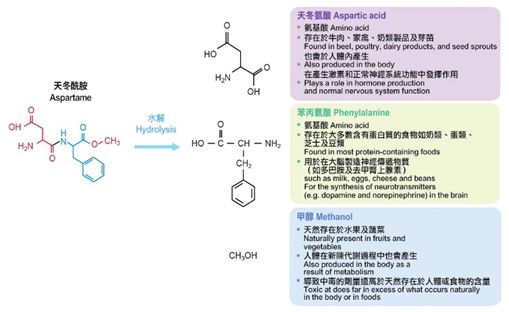
Figure 3. Hydrolysis of aspartame yields aspartic acid, phenylalanine and methanol
Evaluations of Aspartame by IARC and JECFA
The IARC assessed the potential carcinogenic effect of aspartame, while JECFA considered all possible health impacts in its risk assessment, taking dietary exposure of aspartame into consideration. The findings in the joint statement by the IARC and JECFA on 14 July 2023 are summarised as follows:
(a) The IARC classified aspartame as possibly carcinogenic to humans (Group 2B) on the basis of “limited evidence” for carcinogenicity in experimental animals and humans;
(b) In the three observational studies that allowed an assessment of the association between aspartame and cancer, the IARC observed a positive association between the consumption of artificially sweetened beverages and the risk of liver cancer; however, chance, bias or confounding could not be ruled out as an explanation for the positive findings;
(c) JECFA concluded that there was no convincing evidence from experimental animal or human data that aspartame has adverse effects after ingestion, and that it was not possible to establish a link between aspartame exposure in animals and the appearance of cancer. This conclusion is supported by the information that aspartame is fully hydrolysed in the gastrointestinal tract into metabolites that are identical to those absorbed after consumption of common foods; and
(d) JECFA also concluded that dietary exposure to aspartame does not pose a health concern and indicated no reason to change the previously established ADI of 0 to 40 mg/kg body weight for aspartame.
WHO will continue to monitor new evidence and encourage independent research groups to conduct further studies on the potential association between aspartame exposure and consumer health effects.
How is Aspartame Regulated?
In Hong Kong, sweeteners, including aspartame, approved for food uses have undergone safety evaluations by international authorities such as JECFA, and are regulated under the Sweeteners in Food Regulations (Cap. 132U). Sweeteners should be used in compliance with GMP, i.e. the quantity added to food shall be limited to the lowest possible level necessary to accomplish the desired effect.
What Should Consumers Do?
Some consumers use sweeteners as a means for weight control. The key to preventing overweight is not to consume more calories than those that are burnt. Low-calorie sweeteners can certainly be used as an alternative to reduce calories by replacing table sugar. Nevertheless, they only work if the calories saved are not added back by, say, eating more food later in the day or taking in more of other calorie-yielding nutrients such as carbohydrates, protein and fat in the overall diet. Long-term weight maintenance rests on a healthy and active lifestyle that includes a balanced diet and suitable physical activity, which requires long-term commitment.
Steamed Chicken with Pumpkin and Cloud Ears
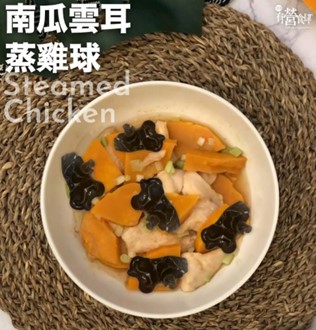
Steamed chicken with cloud ears is a household dish. Will pumpkin add an element of surprise to it?
Pumpkin, which is naturally sweet in taste, can reduce the amount of sugar needed. The velvety pumpkin paired with refreshing cloud ears and tender chicken gives a triple texture sensation. Despite being a “3 Low” choice, this dish is just as delicious.
If you want to learn how to make this dish, please take a look at this “Eatsmart Recipe”!
https://restaurant.eatsmart.gov.hk/eng/content.aspx?content_id=1298

News on CFS
1. CFS's New Exhibition Boards
Recently, two sets of new exhibition boards are on display in the exhibition room of the Communication Resource Unit of the CFS. Centred around the themes of “Understanding Trans Fats” and “5 Keys to Food Safety”, the exhibition boards provide information such as what the differences between trans fats and saturated fats are, why trans fats are harmful to our health, and what foodborne diseases and “5 Keys to Food Safety” are.
- “Understanding Trans Fats”
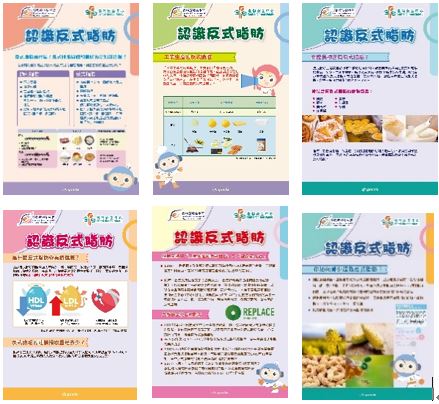
- “5 Keys to Food Safety”
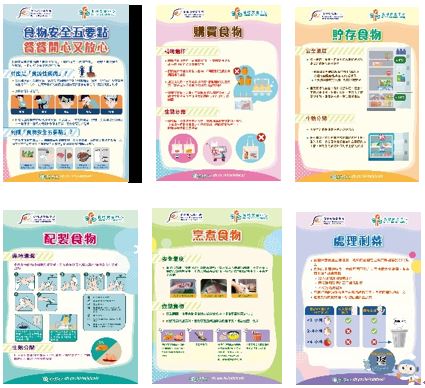

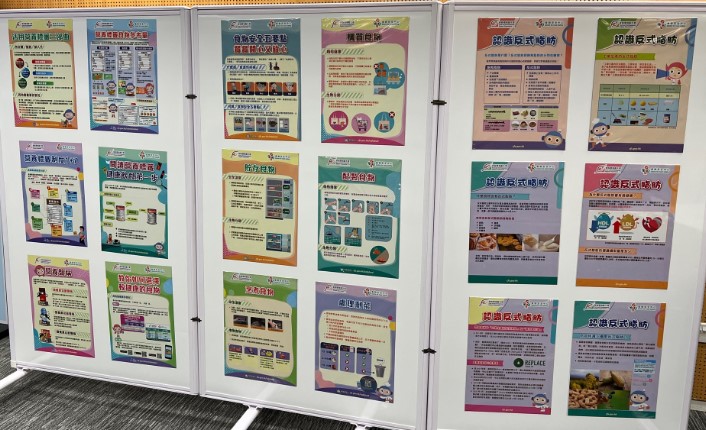
The exhibition room is freshened up with new exhibition boards.
For persons concerned with food safety, if they have any questions mentioned above and want to learn more, they are welcome to visit the exhibition room, where relevant leaflets are also available for free. The address and opening hours of the exhibition room of the Communication Resource Unit are as follows:
Address: Room 401, 4/F, Food and Environmental Hygiene Department Nam Cheong Offices and Vehicle Depot, 87 Yen Chow Street West, Sham Shui Po, Kowloon
Office hours:
Monday to Friday: 8:45 am to 1:00 pm; 2:00 pm to 5:30 pm
Saturday, Sunday and Public Holiday: closed
2. 1st Technical Meeting with Trade on Proposed Amendments to the Preservatives in Food Regulation (Cap. 132BD)
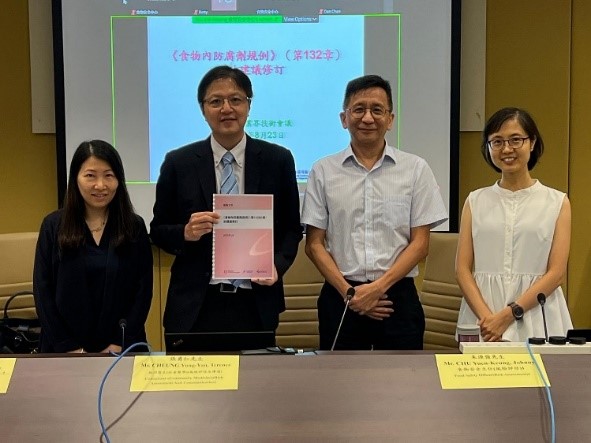
The technical meeting with trade is chaired by Dr. Cheung Yung Yan, Consultant (Community Medicine) (Risk Assessment & Communication) (second left).
The public consultation on the proposed amendments to the Preservatives in Food Regulation (Cap. 132BD) ended on 28 August 2023. To enhance the trade's and the public's understanding of the proposed amendments to the Preservatives in Food Regulation (Cap. 132BD), the CFS held the 1st technical meeting with trade on 23 August. For details, please visit the following thematic webpage:
https://www.cfs.gov.hk/english/whatsnew/whatsnew_fstr/whatsnew_fstr_Proposed_Amendments_Preservatives_Food_Regulation.html

3. The 82nd Meeting of the Trade Consultation Forum

The 82nd meeting of the Trade Consultation Forum was held on 20 September 2023. The CFS and the trade exchanged their views on topics including “Regulation of Partially Hydrogenated Oils (PHOs)”, “Harmful Substances in Food (Amendment) Regulation 2021”, “Safety of Aspartame”, “Proposed Amendments to the Preservatives in Food Regulation (Cap. 132BD)”, “Food Safety Advice for Handling Eggs and Egg Products”, “Risk Assessment Study on Microbiological Quality of Non-hot Served Dishes with Chicken Meat” and “Import Control Measures on Japanese Food”. For details of the event, please visit:
https://www.cfs.gov.hk/english/committee/Notes_and_Presentation_Materials_TCF82_20230920.html

4. Press Briefing on Risk Assessment Study on Microbiological Quality of Non-hot Served Dishes with Chicken Meat
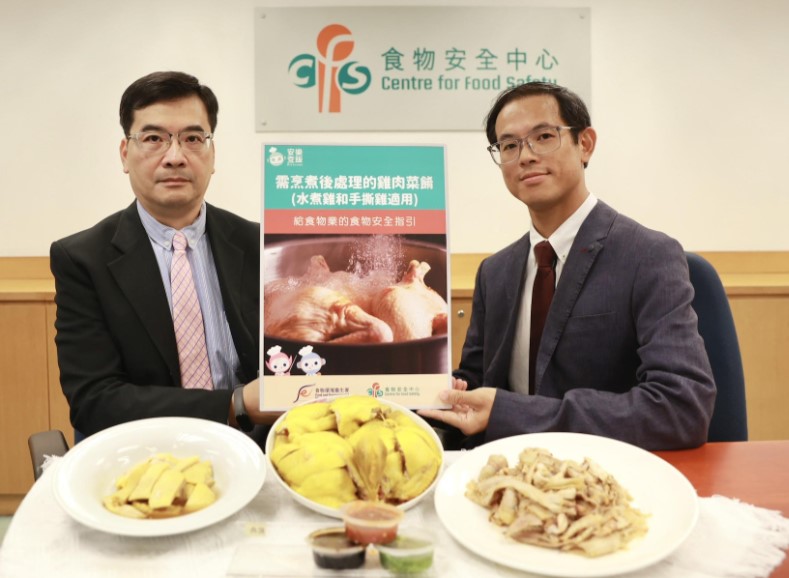
The press briefing was hosted by Dr. Chow Chor Yiu, Principal Medical Officer (Risk Assessment & Communication) (left) and Dr. Chong Tsz Kit, Scientific Officer (Microbiology) (right).
The CFS held a press briefing on 20 September for the publication of the report on the risk assessment study on microbiological quality of non-hot served dishes with chicken meat.
Chicken meat is a common ingredient in many local non-hot served ready-to-eat dishes, and there are quite a number of shops selling takeaway shredded chicken and chopped chicken in recent years. The preparation process of chicken meat for non-hot served dishes may result in greater microbiological risks, due to the potential risk of insufficient cooking and involvement of manual handling. Furthermore, cooling is usually required before serving, and improper temperature control during storage of the dishes may allow the growth of pathogens. In view of this, 100 samples of non-hot served chicken meat dishes were collected by the CFS from various takeaway shops or stalls and restaurants for study. The results showed that all samples complied with the microbiological food safety criteria for pathogenic bacteria (i.e. Salmonella spp., Listeria monocytogenes and Staphylococcus aureus). The overall microbiological quality was found satisfactory. While no unsatisfactory samples were found in the study, the CFS would like to remind food businesses to follow Good Hygiene Practices at all times for preventing contamination of food. Food businesses also have the responsibility to provide sufficient ongoing food safety and hygiene training to their staff.
For details, please visit the thematic webpage on “Microbiological Quality of Non-hot Served Dishes with Chicken Meat”:
https://www.cfs.gov.hk/english/programme/programme_rafs/programme_rafs_fm_01_30.html

Ask Our Mascots
Iodised Salt Cannot Protect against Radiation
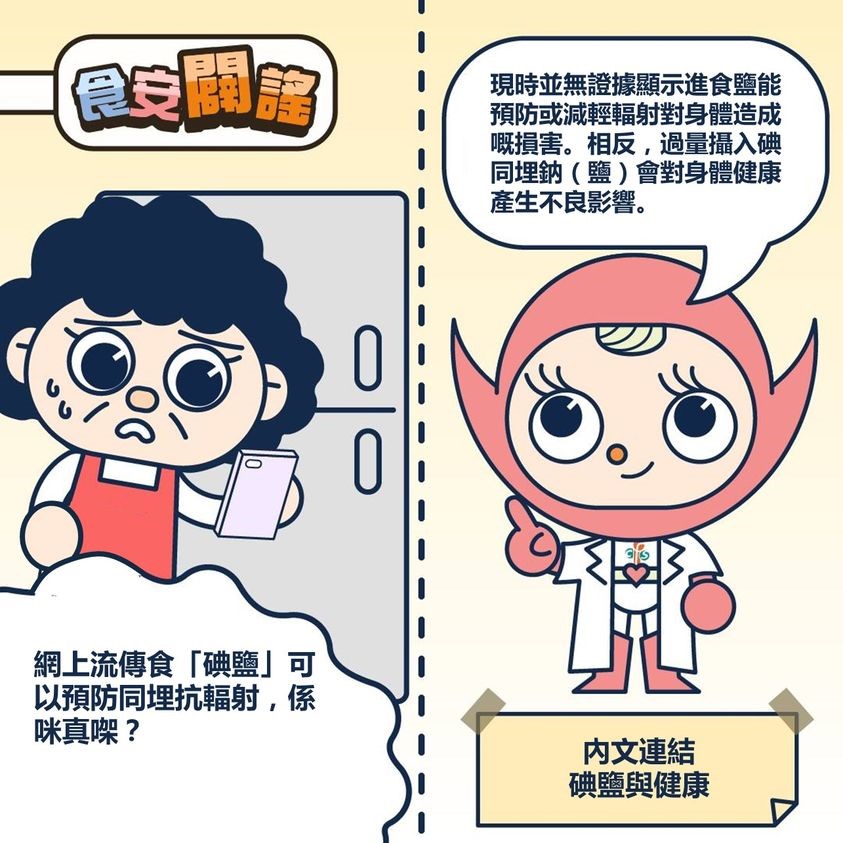
There are rumours that iodised salt can provide protection against radiation, which have triggered panic buying of iodised salt. Our mascots have to clarify: Iodised salt cannot protect against radiation.
Currently, there is no scientific evidence to suggest that consumption of salt can effectively prevent damage to the body from radiation. For iodised salt, its iodine content is low. One has to take about 2.5 to 5 kg of iodised salt a day in order to absorb the equivalent dose of iodine contained in an iodide tablet. On the contrary, excessive consumption of iodine and sodium (salt) is harmful to the body. Moreover, iodide tablets are not “radiation antidotes”, nor can they protect against any other radioactive substances besides radioactive iodine.
Iodide Tablets Must Not be Taken Casually
In case of a nuclear emergency, radioactive iodine may be released to the environment. For people exposed to radioactive iodine, such as staff at the nuclear plant and the rescue team, taking iodide tablets before or shortly after the exposure can reduce the uptake of radioactive iodine by the thyroid gland. However, such tablets must only be taken under emergency circumstances and on the medical advice of a doctor or a public health professional.
Harmful Rather than Beneficial
Indiscriminate use or excessive intake of iodine are detrimental to health, including causing thyroid disorders such as hypothyroidism and hyperthyroidism. Moreover, many studies revealed that excessive intake of salt would also increase the risk of hypertension and cardiovascular disease.
Mascot ON would like to remind everyone to never panic-buy salt. For more information, please visit:
https://www.cfs.gov.hk/english/programme/programme_rafs/programme_rafs_fc_01_30_Q&A_5.html

Food Safety Quiz
- Shellfish toxins are heat stable, odourless, tasteless and not be destroyed by cooking, freezing or other food preparation procedures. To reduce the health risk of shellfish poisoning, remove and discard all __________________ of shellfish where possible before consumption.
- If the power at home has gone out for more than four hours, what should we do with the food in the refrigerator?
- To avoid MSG, we could consider using more herbs and __________, and glutamate-rich ingredients (e.g. tomato, mushroom) during cooking to enhance the flavour of food, thereby reducing sodium intake.
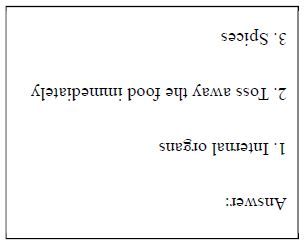
Diary of Mascot ON
Food Safety Lesson on Power Cut
Typhoons and heavy rain are common in summer. In case of a power cut at home, what should we do with our food in the refrigerator?
Do Not Open the Refrigerator Door Unless Necessary
During a power cut, bear in mind that the refrigerator door should be kept closed. In this way, food can be stored for 2 to 4 hours in the fridge; 48 hours in a full freezer; and 24 hours in a half-full freezer.
Keeping Time after Power Restoration
After the power has been restored, for any potentially hazardous foods such as meat, seafood, eggs, milk, dairy products, cut fruits and cooked dishes that have been at temperatures between 4°C and 60°C:
- Refrigerate or consume immediately if kept for less than two hours;
- Consume immediately if longer than two hours but less than four hours; and
- Toss away if more than four hours.
Be Fully-prepared before a Power Cut
We should keep the refrigerator in good order in normal times, and place appliance thermometers inside to ensure that the temperature of the fridge is at 4°C or below, and the freezer at -18°C or below. Always keep some ice cubes and frozen gel packs in the freezer. They can keep the freezer full to help maintain the temperature, and keep foods cold should they be transferred to other locations.
Now that you are well trained about food safety, there is no need to worry when power goes out during a typhoon! For more comprehensive information, please visit:
https://www.cfs.gov.hk/english/multimedia/multimedia_pub/multimedia_pub_fsf_180_02.html

